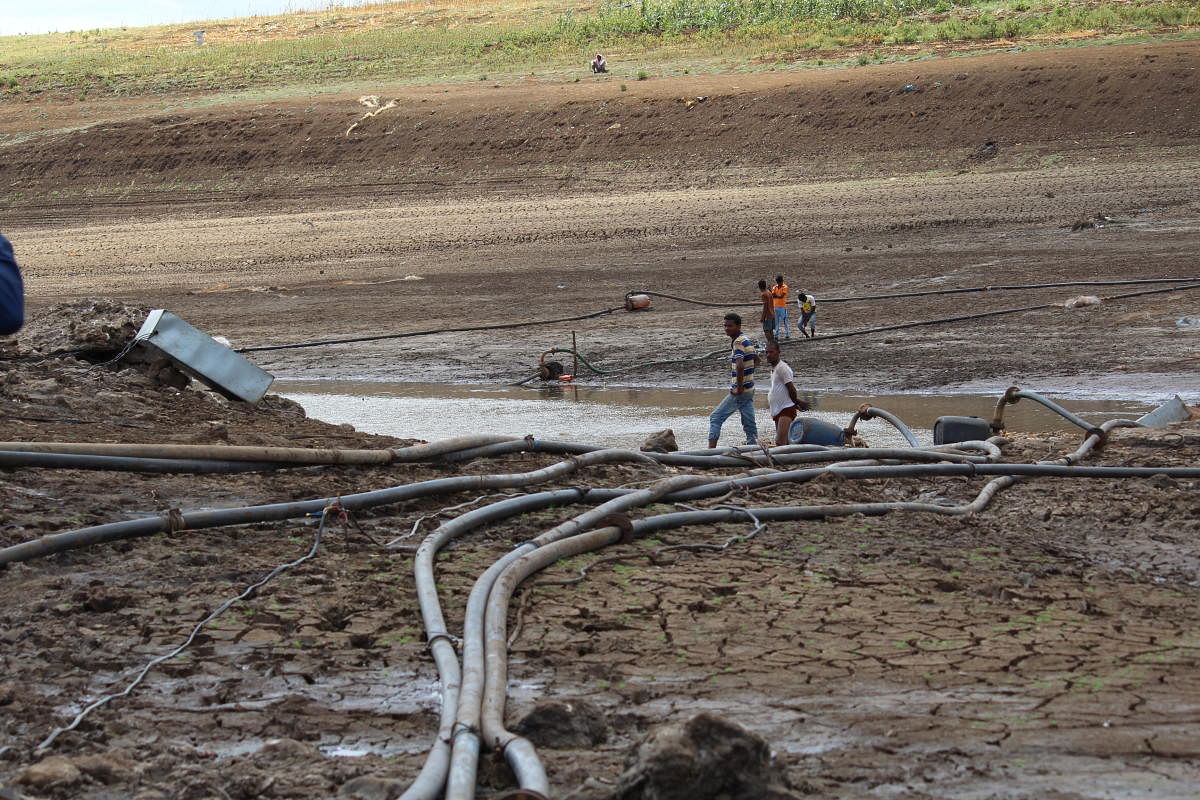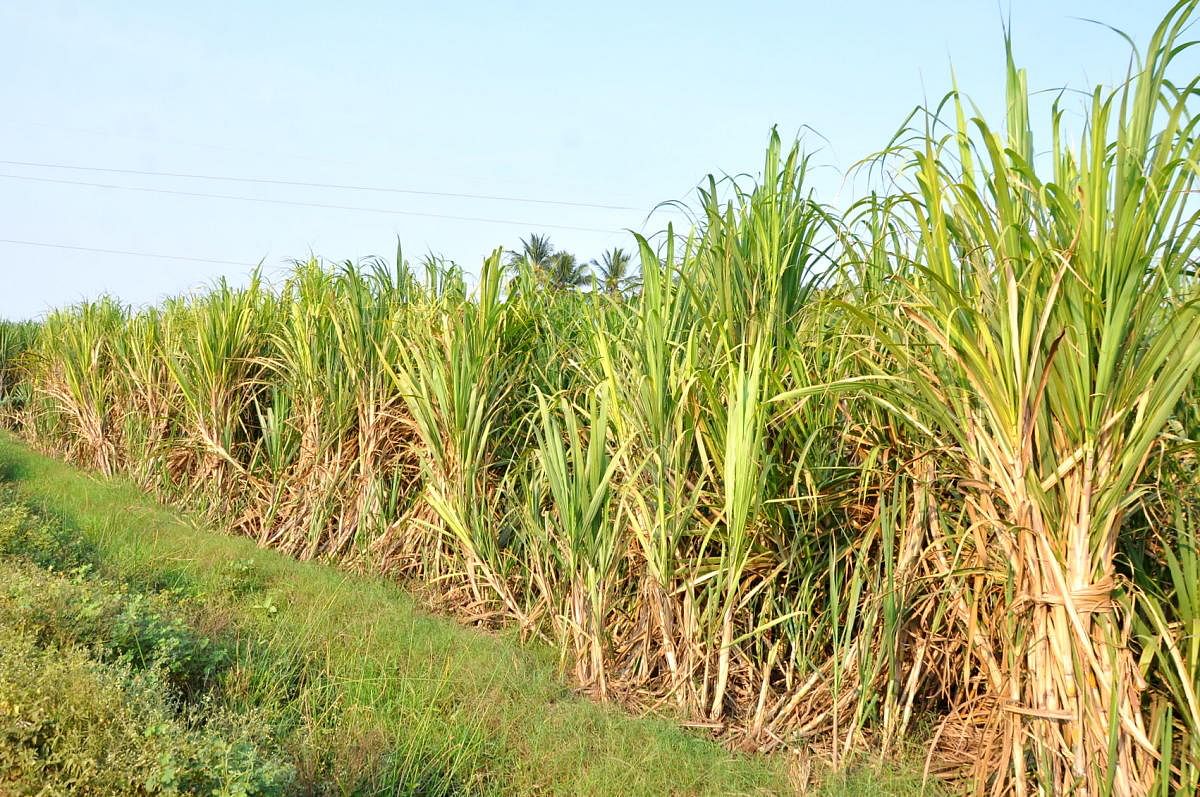
Of the 172 houses in Obannanahalli village in Chitradurga district, 148 are locked since January end. Girish, 25, is one of the few left behind in this village. “I can’t work as a labourer at the construction site as I am physically challenged,” he said. “There is neither water in the village nor work. So, all of them have gone to ‘a happy land’,” he told DH.
A decade ago, the situation was not this bad. People had resources and knew ways to sustain through natural calamities. But after farmers started converting their land into areca plantation around seven to eight years back, work is hard to come by for the labourers, forcing them to migrate to ‘the happy land’ (a term used by the villagers to describe migration) in search of work.
Not sustainable
“Water scarcity and migration of labourers are bound to happen in an arid area like Chitradurga when it starts growing areca nut, a Malnad crop,” said agriculture researcher Shivananda Kalave of Sirsi. With better irrigation facilities in Holalkere, Hosadurga and Chitradurga taluks in the last decade, farmers have taken up areca cultivation, which is water-intensive. This, according to experts, has adversely affected the water availability.
Experts and several government reports indicate that mass migration is on the rise in villages where there is an acute shortage of water and less work for farm labourers. And the change in the cropping pattern is one of the reasons for farm distress. In most parts of Karnataka, farmers are rapidly moving away from food crops and embracing commercial crops, affecting the country’s food security.
Prakash Bhat, an agriculture expert, cites the examples of Bagalkot, Vijayapura, Belagavi and Uttara Kannada districts, which have seen drastic changes in the cropping pattern in the last few years. “Not so long ago, Bagalkot and Vijayapura used to grow high-quality jowar. But now with the increase in the irrigated areas, farmers have shifted to sugar cane, maize and horticulture crops. Uttara Kannada district which usually receives 2000-3000 mm of rainfall is an ideal place for growing paddy, but farmers have shifted to areca nut,” he said.
Similarly, ginger, pineapple and maize have replaced paddy in Mundgod, Banavasi and Haliyal in Uttara Kannada district.
The cotton and chilli growing areas of Raichur, Ballari and Koppal districts have turned into the ‘rice bowl of Karnataka’, again due to access to irrigation.
Another worrying factor is the conversion of forest land in Malnad areas into areca and rubber plantations.
“In the last three years, more than 3,000 hectares of forest land has been converted into rubber plantation in the catchment areas of Shivamogga and Chikkamagaluru districts. And we are already seeing its effect, as for the first time in many years, the Malnad area has gone dry,” amphibian researcher Ram Prasad of Agumbe told DH.
Experts and farmers at the tail end of the irrigation canals question the silence of the state government over its inaction to implement the rules regarding crops that can be grown in the command areas. For many years, the state government has not formed a committee to strictly instruct the farmers against growing water-guzzling crops in the command areas.
“It is because of water mismanagement that 156 taluks in the state are declared drought-affected and the demand for considering their area as drought-affected starts from January itself,” said Shivananda Kalave. Even last year, Karnataka declared as many as 156 taluks as drought-affected despite the state receiving almost normal rainfall.
Vicious circle
But why are farmers shifting to commercial and horticulture crops? “Agriculture is labour-intensive whereas horticulture requires comparatively less labour. Horticulture crops are long-term and need labourers only at the time of planting and harvesting,” said Mahadev B Chetti, vice-chancellor, University of Agriculture Sciences,
Dharwad.
According to him, this is one of the reasons why there has been a steady increase in the area of land coming under horticulture crops. Last year, Karnataka produced 278 million tonnes of food grains while the horticulture output in the corresponding period was 310 million tonnes.
Farmer leader Maruti Manpade of Kalaburagi points out that the lack of work during offseason is pushing labourers towards migration. “Farm labourers do not get much work in seasons other than rainy season and they are forced to go to bigger towns in search of work,” he said and suggested that governments should approach premiere agencies to address farmers’ problems.
Experts also pointed at the lack of interest among farmers to continue the occupation as it is not seen as remunerative any more. “As a security guard, taxi driver or construction labourer, one can earn around Rs 700 per day. Why would anyone be interested in working for Rs 400 a day as a farm labourer,” asked Manpade.
Also, a research report titled ‘Decadal Shift in the Cropping Pattern in Karnataka’, prepared by the Karnataka Agriculture Price Commission (KAPC) in 2016, presents a gloomy picture of the state’s farming sector. The report shows how in one decade (2005-06 to 2014-15), nearly 12.49 lakh hectare of its agriculture land was diverted for other purposes. And in the same duration, there was an increase of 36,000 hectares of land under horticulture crop cultivation. KAPC Chairman T N Prakash Kammardi, said in the report that in the last decade, Karnataka saw nearly 60,000 hectares of agriculture and horticulture land getting converted into non-agriculture land every year.
Change the approach
Maruthi Manpade blames administration for the present state of agriculture in the state. “All the governments so far have lost the trust of farmers in providing them a suitable market, which has resulted in them shifting to commercial and profit-oriented crops. If a jowar-growing farmer gets a good price, why would she grow a commercial crop,” he said. He suggested that government, instead of just fixing the minimum price, should start procuring the entire produce from the farmer.
Kalave explained another aspect that has aggravated the situation in the state. Karnataka has more than 35,000 lakes. There is a need to desilt all the lakes so that the lake not only store water till next monsoon but also improve the groundwater table. Farmers should be encouraged to grow trees on the border of their field to conserve soil and water. Trenches should also be dug around the field. Only with proper soil and water conservation methods can we overcome the current crisis and hope for a better future.
